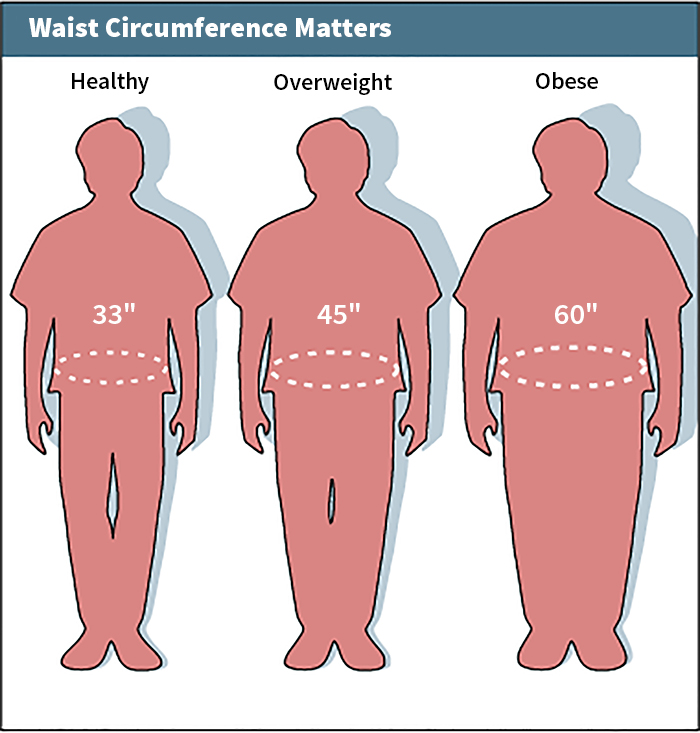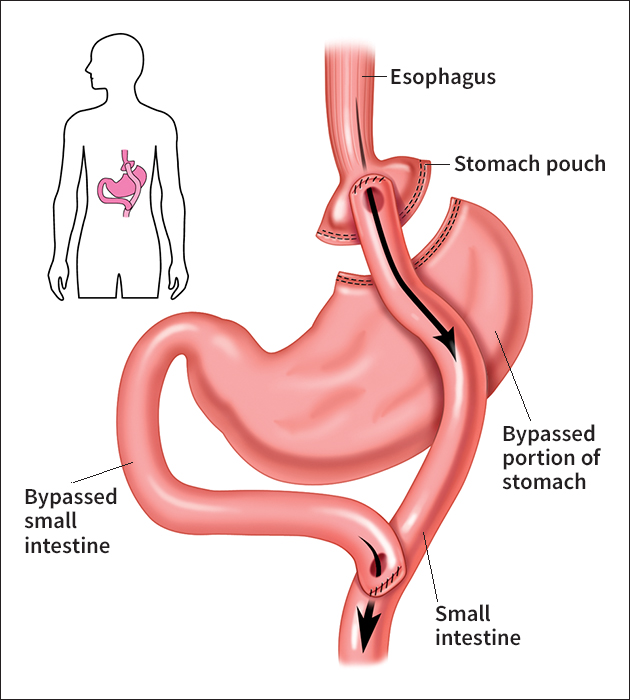Weight control is the process of maintaining a healthy body weight. In human beings, weight control usually involves regulating body fat. When people gain excess weight, most of the extra weight is body fat. When people lose weight, most of the weight lost comes from body fat. The relationship between the amount of energy you obtain through food and the energy your body uses to maintain normal functions and to perform physical activity mainly determines how much body fat you will have.
Weight control is medically important. Excess body fat is a major factor in many health problems. The condition of having a excessive body fat is called obesity << oh BEE suh tee >>. Obese people have a higher risk of developing diabetes, hypertension (high blood pressure), and heart disease.
Energy supplied in food and burned by our bodies is measured in units called kilocalories. This term is often shortened to calories (see Calorie). Countries that use the metric system measure energy in joules instead of calories. One kilocalorie equals 4.184 joules. If you eat more calories than your body burns, most of the excess calories will be stored in your body as fat. If you eat fewer calories than your body burns, your body will burn stored fat for energy. For example, eating about 3,500 more calories than are burned will cause you to gain about 1 pound (0.45 kilogram) of fat. You will lose about 1 pound of fat if you consume 3,500 fewer calories than you use.
How body weight is determined
Food intake.
Certain centers of the brain control the sensations associated with appetite, hunger, and fullness. These centers normally make people eat an amount of food that provides the right amount of energy for their needs. The feeding centers make people want to eat. The satiety << suh TY uh tee >> centers act as a brake on the feeding centers. They make people feel satisfied and stop eating.
The feeding and satiety centers are complicated systems. They are controlled by many chemicals in the brain. Many factors affect the production and release of these chemicals. These systems operate to determine food intake, including the amount and type of food that is eaten. They also determine how much body fat a person has, blood sugar levels, and protein and fat metabolism. The systems can be affected by illness or emotions. Illness usually causes a decrease in appetite. Emotions can affect people’s eating behaviors in different ways. For example, strong emotions, such as disappointment, cause some people to eat more food and others to eat less food than they normally consume.
Energy expenditure.
Daily total energy expenditure is the total amount of calories burned by a person’s body in a day. It consists of three components, resting energy expenditure, the thermic effect of food, and energy expended in physical activity. Resting energy expenditure is the energy used for normal body function, such as breathing and the beating of the heart, while the body is at rest. It accounts for about 70 percent of total energy expenditure. The thermic effect of food is the increase in energy expenditure that occurs after eating a meal because of the increased cellular activity required to digest food. It accounts for about 10 percent of total energy expenditure. Energy expended in physical activity is energy used in daily activities and exercise. It accounts for about 20 percent of total energy expenditure.
In general, the number of calories burned through resting energy expenditure is proportional to a person’s weight. For example, a person who weighs 75 pounds (34 kilograms) will burn fewer calories at rest than a person who weighs 150 pounds (68 kilograms). A large person also burns more calories than a small person when engaged in weight-bearing activities, such as walking or running. In addition, the more vigorous the activity, the more calories are burned.
Energy balance.
Consuming the same amount of calories that are expended maintains a constant body weight. Small, but consistent, differences between energy intake and energy expenditure over a long period can lead to major changes in body fat. For example, eating as few as 10 calories more than expended each day leads to an increase in weight of about 1 pound (0.45 kilogram) in one year or 30 pounds (14 kilograms) over 30 years.
Maintaining a healthy body weight
Many people who are not medically obese still weigh more than they would like. Several methods are available to help overweight and obese people lose weight. These methods include changing the diet to decrease calorie intake and increasing physical activity. Many methods involve behavior modification therapy. Such therapy helps people make lifestyle changes to maintain a healthy weight. Although many obese people lose weight initially, maintaining long-term weight loss is much more difficult. Physicians may prescribe drugs and even surgery for people whose obesity is life threatening or who cannot reduce their weight through other methods.

Dieting
is often the first step in any weight reduction program. The goal of a weight-reducing diet is to consume fewer calories than a person’s daily total energy expenditure. For example, a person who eats 1,000 fewer calories a day than he or she uses will lose about 2 pounds (0.9 kilogram) a week. However, the foods in a reducing diet must provide a well-balanced selection of all the nutrients needed for good health. For a complete discussion of well-balanced diets, see Nutrition.
Diets for weight reduction vary. A very-low-calorie diet provides fewer than 800 calories per day. A low-calorie diet provides 1,000 to 1,500 calories per day. For obese adults, a very-low-calorie diet will result in a loss of about 15 to 20 percent of a person’s initial body weight within 12 to 16 weeks. A very-low-calorie diet is difficult for people to maintain for long. Many people fail at such a diet and regain the weight they lost. Low-calorie diets produce a loss of about 8 percent of initial body weight after 16 to 26 weeks.
Health professionals commonly prescribe low-fat diets to help obese patients lose weight. Dietary fat contains 9 calories per gram compared with 4 calories per gram for carbohydrates and proteins. Thus, diets that limit dietary fat have fewer calories. Many people try to lose weight through diets that limit high-carbohydrate foods in favor of high-fat and high-protein foods. Most of these diets do not attempt to limit calories. However, many scientists are uncertain about the long-term effectiveness of low-carbohydrate diets.
Eating foods with a high water content can also help people lose weight. Such foods are called low energy density foods. They include fruits, vegetables, and certain soups. These foods contain fewer calories per weight of food than dry foods, such as pretzels or crackers. They also have fewer calories than foods that contain a lot of fat, such as cheese or butter. A diet containing many low energy density foods results in fewer total calories consumed.
Prepackaged meals or liquid formula meal replacements can also help people lose weight. These products work by controlling portion size and calories. They also reduce food variety, which causes people to eat less.
Physical activity.
Increasing physical activity is not an effective method for achieving initial weight loss. But exercise is important in helping people keep weight off that is lost by dieting. However, an obese person—even one who is otherwise healthy—should not suddenly start a program of prolonged, strenuous exercise. An exercise program should be developed gradually to avoid dangerous strain on the body.
For example, a person may begin an exercise program by taking daily walks and gradually increasing the length each day. More demanding exercises can be added as a person becomes fitter and thinner. A person should build up to five to six hours of exercise per week. However, men over 40 years old, women over 50, and anyone with risk factors or symptoms of heart or lung disease should consult a physician before starting a vigorous exercise program.
Behavior modification
therapy is used to help people make the lifestyle changes needed to lose weight and keep weight off. The goal is to identify and then modify habits that contribute to obesity. Behavior modification programs are usually conducted by psychologists or other trained personnel.
Behavior therapy for weight control includes keeping daily records of food intake and physical activity. People also must avoid situations that may prompt overeating. Social support, including assistance from family members and friends, is an important aspect of the therapy. Patients must also develop a relapse prevention plan to help recover from episodes of overeating or from regaining weight. Obese people who are treated with group behavior therapy usually lose about 9 percent of their initial weight in 20 to 26 weeks of treatment.
Drugs.
Physicians may prescribe drugs as part of a weight control program for carefully selected obese patients. Some drugs used to treat obesity act on brain centers that control appetite. As a result, people decrease food intake. Other drugs affect the intestine to decrease the absorption of dietary fat. The drugs thereby help limit calorie intake. Drug treatment must be combined with a reduced calorie diet and regular physical activity to be most effective.
People using weight-loss drugs must be supervised by a physician to reduce the risk of side effects. Most patients using weight-loss drugs as part a weight control program lose about 10 percent of their body weight within 6 months. Researchers are continuing their efforts to develop safe and effective medications to help control weight.
Surgery.
People who are obese face serious and life-threatening medical problems. Some extremely obese people require a surgical operation to reduce the size of their stomach to lose weight.
The most commonly performed weight-loss operation is called gastric bypass surgery. In this operation, a surgeon uses staples to close off the top of the stomach. This procedure reduces the size of the stomach to a small pouch. The upper portion of the small intestine is then attached to the pouch, bypassing a portion of the intestine. After surgery, the patient can eat only a small amount of food before becoming full. Patients usually lose about one-third of their body weight within one year. They maintain the weight loss for many years.

Successful weight loss.
Effective treatment for obesity considers the patient’s willingness to undergo therapy and his or her ability to comply with treatment requirements. Successful treatment also may depend on a person’s access to skilled caregivers and whether the patient can afford treatment. Obesity is a chronic condition that requires long-term, structured therapy for successful weight management. Support from physicians, caregivers, family, and friends and appropriate use of available treatments increase the chance for long-term weight-loss success.
